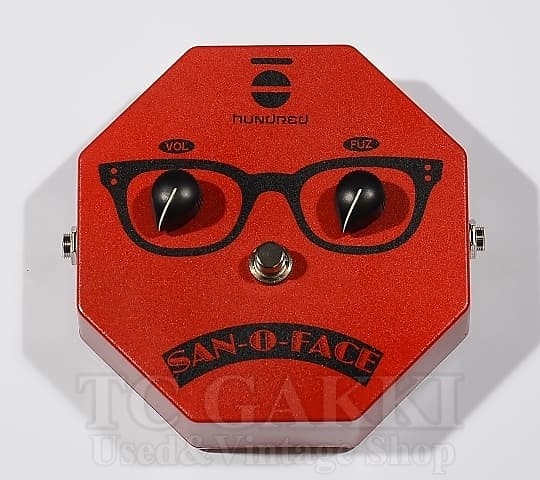Located in Shin-Ōkubo, just a stop away from Tokyo's busy Shinjuku station, lies the musical instrument mecca of TC Gakki. Over the course of its 30-year history, hundreds of thousands of instruments have passed through its doors. It's often regarded as one of the best places to go, whether you're searching for player-grade vintage or an ultra-rare model.
Buying, selling, sometimes trading—TC Gakki is all about used instruments. They work with everyone from individual musicians off the street to famous celebrities to other shops and dealers. It's a store that no one serious about musical instruments should overlook when they visit Japan—and a seller that always has some of the greatest inventory on Reverb.
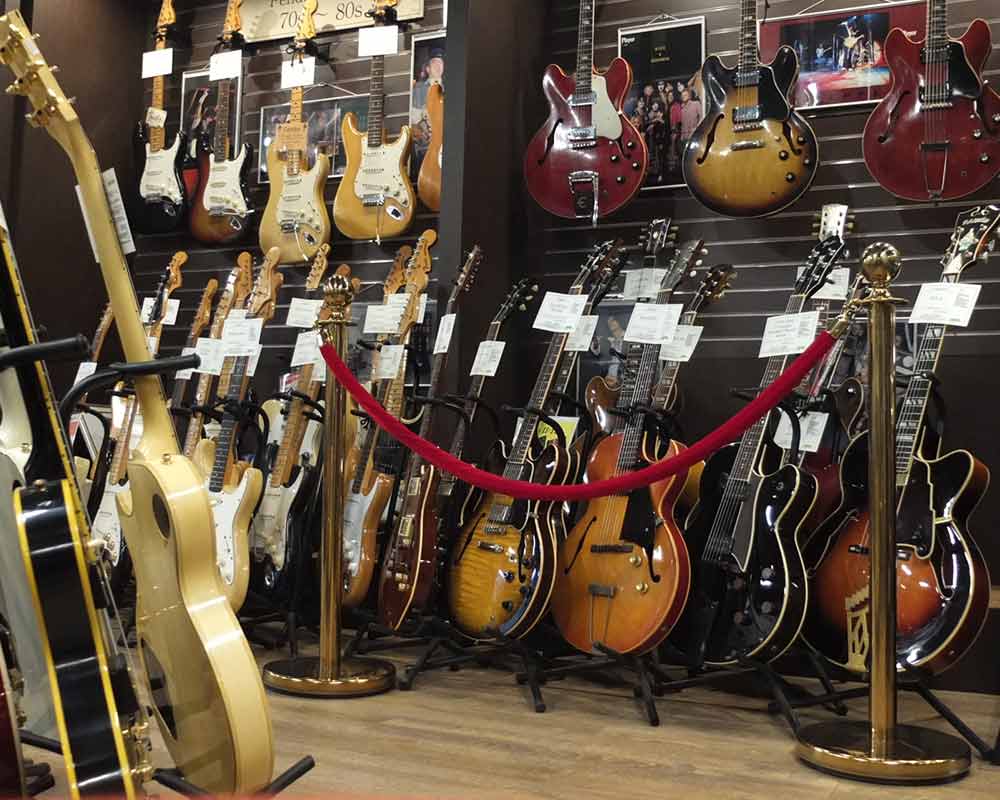
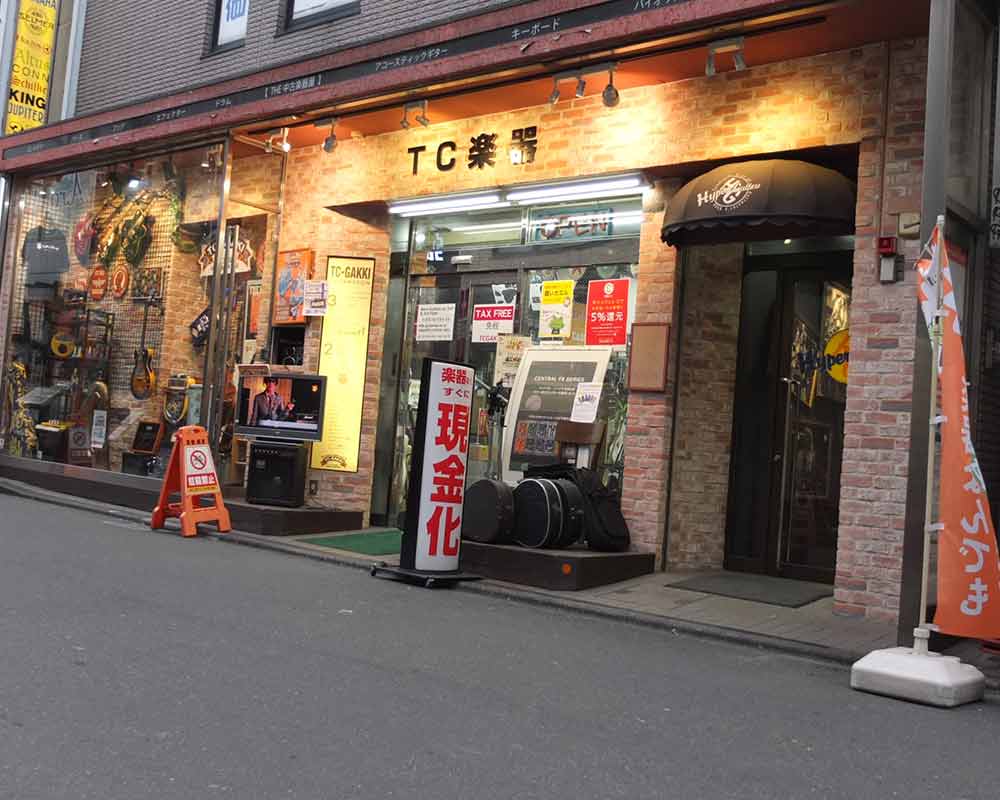
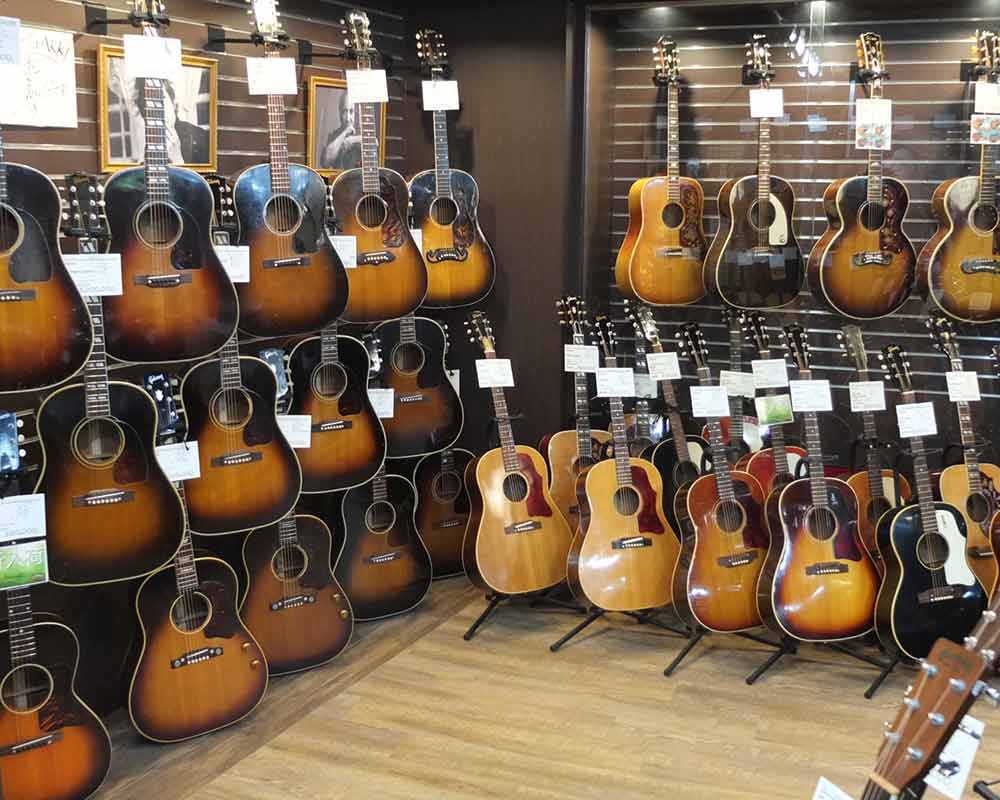
Could you tell us about the beginning and history of TC Gakki?
Actually, TC Gakki just celebrated its 30th anniversary this year. It was founded in 1989 as a second-hand instruments specialty store, and at that time the whole shop was a single floor. There weren't a lot of other second-hand musical instrument shops at that time, and soon we increased the number of guitars and instruments to several thousand. At that point we became "the largest in Japan."
Now we usually have over 5,000 instruments in stock at any time, and we receive over 10,000 or more in a given year. We have dedicated repair people on staff who make sure the instruments are all in good condition. We get all kinds of customers from beginners to professional musicians. Many celebrities often stop by here, and sometimes we get a mention on Japanese TV. Foreign customers often stop by too and say that visiting us was the reason they came to Japan. It's a great honor.
Over the years, there must have been very interesting or unusual guitars. Lately, I remember seeing a rare Veleno at TC Gakki. What are some others that have passed through? What are some of the most interesting or the rarest guitars?
We've had a lot of rare ones, so it's hard to choose one that is the most interesting or rare—but certainly in terms of preciousness, we've had pre-war Martin D-45s or D-28s. Also, the unique 1967 Martin D-28 "Train," where a scene from the movie The Great Train Robbery was reproduced in the inlay.
Also, a Mossman Super Custom by Baxendale that has a Bugs Bunny design—it was at the NAMM Museum for 10 years. Also, a model ordered by Keith Smart, chairman of the UK Zemaitis Club, from Tony Zemaitis himself. And a No. 2 prototype made by Ken Smith for Anthony Jackson.
Let's see, an SG-175, which was the prototype for Greco's GO series, and a mini-guitar version of Pat Metheny's signature Ibanez model. After that, things like Kawai's moon-shaped Moonsault guitar, or Atlansia guitars and basses, or Fender's earliest Extrad models... I can't introduce them all!
The Japanese "Lawsuit-era" guitars are very famous now. What do you think about guitars such as Greco, Tokai, Burny, Fresher? Do you have any good or dissatisfied points?
Many of them are worth mentioning—the EGs from Greco, Love Rocks from Tokai, as well as many Burny and Aria Pro II models that we've had. Especially guitars made at Fujigen and Matsumoku—these guitars are popular not only in Japan but also overseas as well.
Some of the models are more expensive than regular ones due to rarity, but we see customers—especially from Europe—who are coming here to find such instruments. It gives us great joy that these vintage Japanese products have made their mark and are valued so highly.
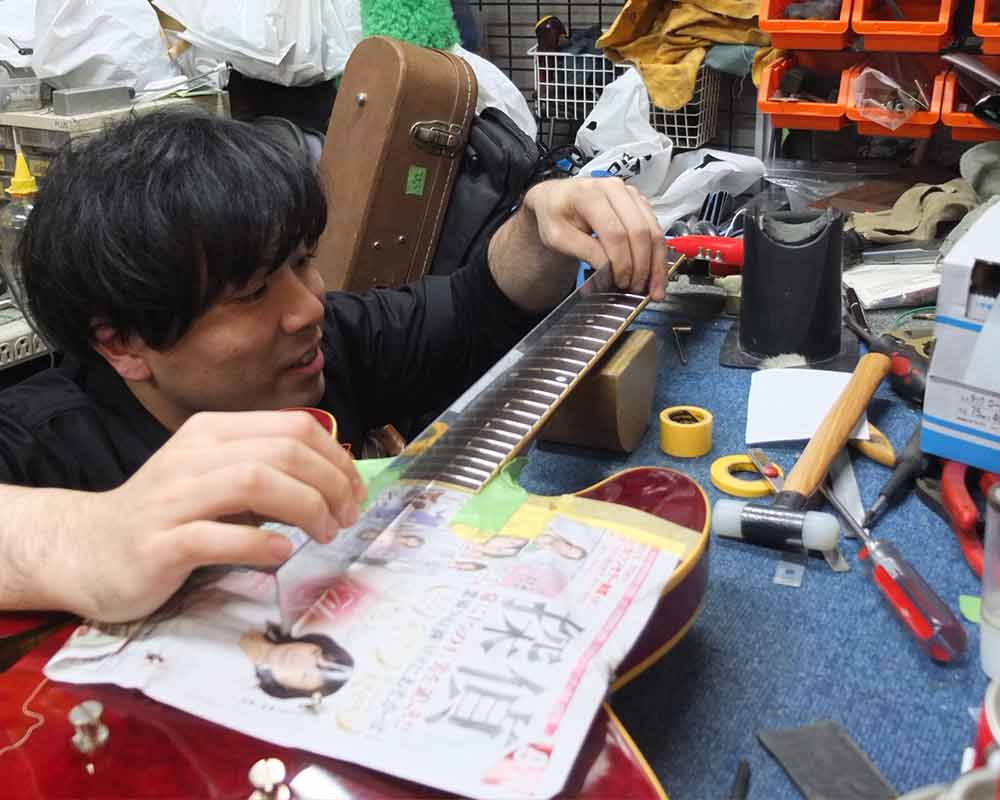
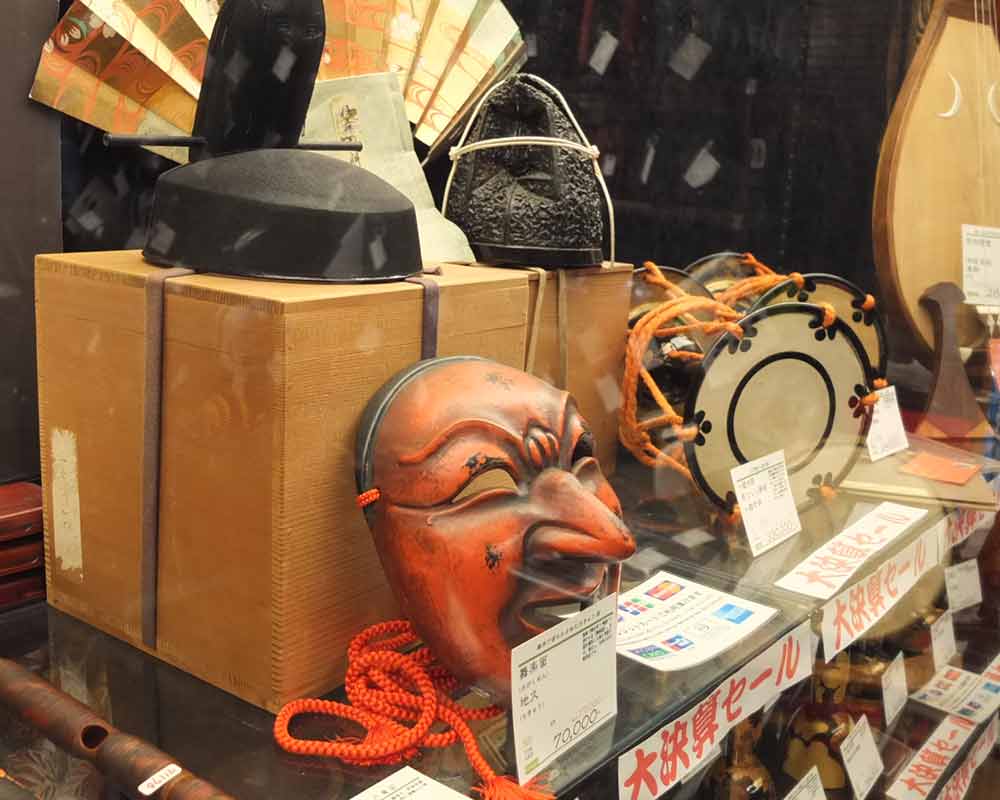
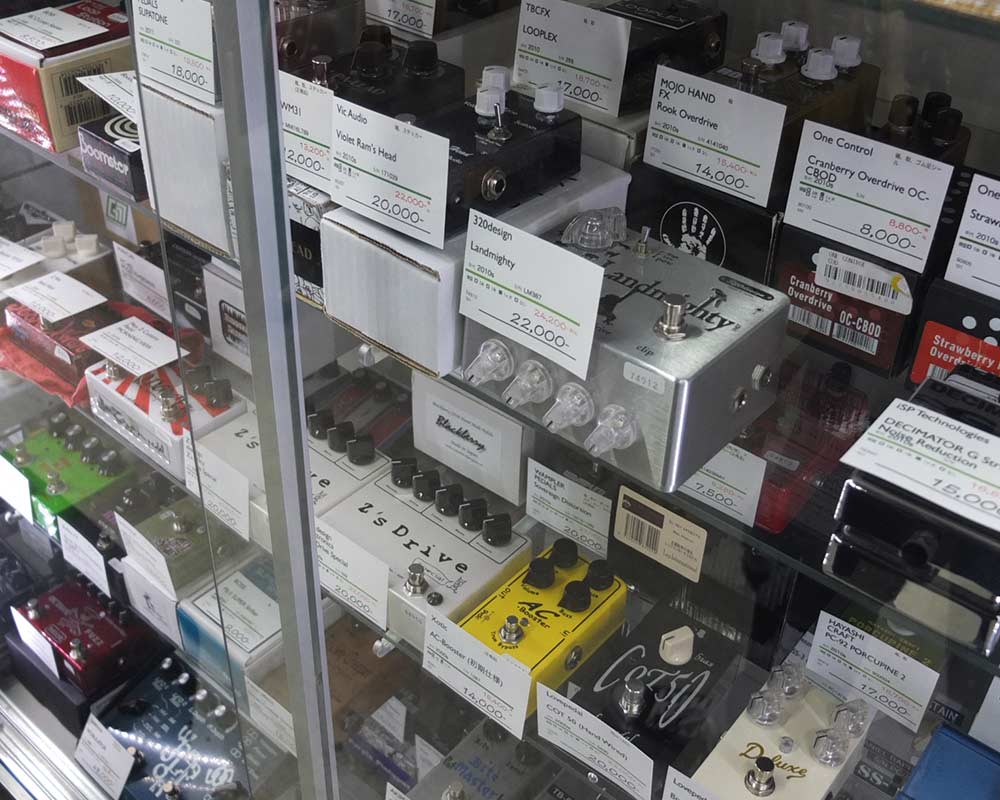
TC Gakki also has a lot of effect pedals. What do you think about the popularity of vintage effects and more modern boutique pedals?
We receive more than 2,000 effect pedals per year. Many Fuzz Faces, Range Masters, Ram's Heads, Tube Screamers, and OD-1s. The vintage Tube Screamer is generally the one that is the standard for comparison—and since we've had so many vintage effects, we've gotten quite a lot of experience in seeing that.
We get a lot of modern pedals in, and the modern pedals have excellent functionality and their own unique personalities—they don't suffer when compared with vintage and are therefore popular. Recently we've been the official distributor for Bob Burt pedals here in Japan—it's a very good pedal.
In addition, you have released TC Gakki's original model guitar and effector. Could you introduce that guitar and effector?
For guitars, we created an official licensed model for the popular Japanese anime Ghost in the Shell. Its design is based on the Tachikoma robots and has a glowing fingerboard. It's an excellent guitar both in design but also great for professional use. We also have created some unique guitars and effects pedals for popular candies and also professional baseball teams here.
We also have an original fuzz here called the SAN O FACE, which has a unique motif, well, because it's based on the face of our staff member Mr. Sano. It has a great sound and is quite popular. Based on classic fuzz design, we measure germanium transistors one by one and make sure we select the best-sounding ones, and we make them by hand. We've even gotten orders from it through Reverb from overseas customers, and we build each one as the order comes in.
TC Gakki also has brass instruments and traditional Japanese instruments. Could you tell us a little bit about the main traditional Japanese instruments?
Japan has more than 1,000 years of history, and during that time its own musical instruments evolved. All of them are somewhat unique. The Japanese Biwa is a stringed instrument, somewhat like a lute, and it's sometimes popular overseas. Flutes such as the shakuhachi or the shō are also loved for their unique sounds. Many flutes are small and light, so they are convenient to send and carry. We have some from the 19th century, and some that are even earlier.
Japanese "taiko" drums also have a unique sound—some are small, and some are very large. Some of them feature a beautiful gold lacquer, and they are valuable not only as musical instruments but also for their aesthetic design. These drums are cut out from a single tree, and cannot be machine-made.
In general, all of the Japanese instruments are made by traditional craftsmen, and in recent years the number of people who inherit this skill has decreased, so their value will increase in the future.
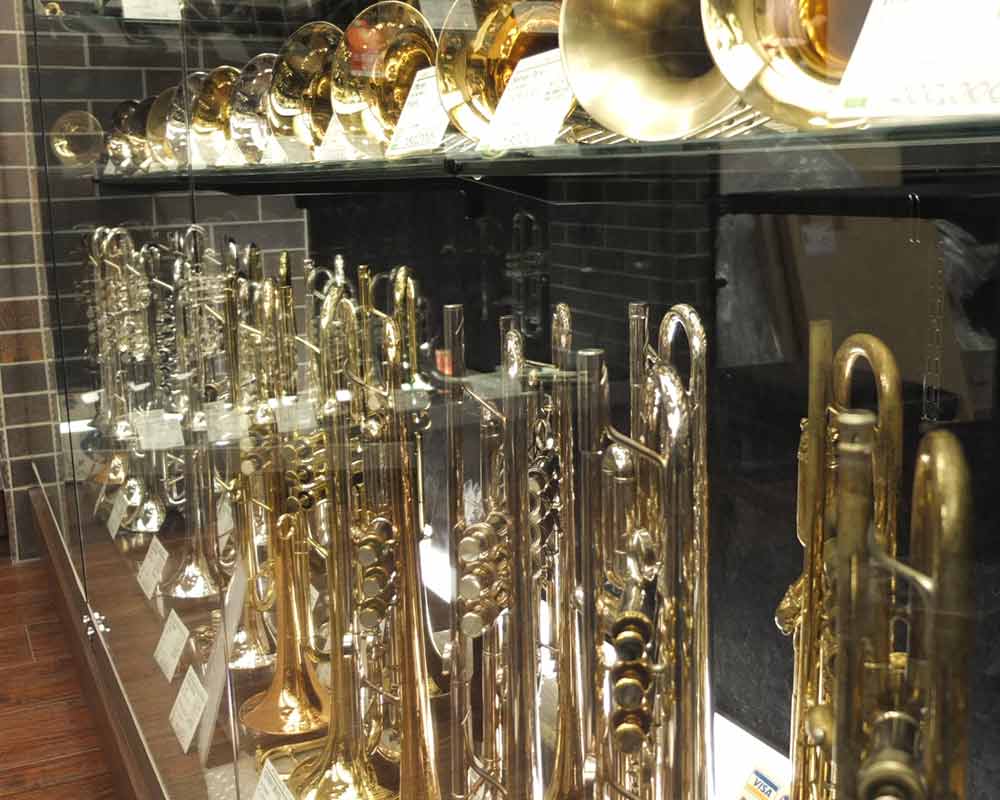
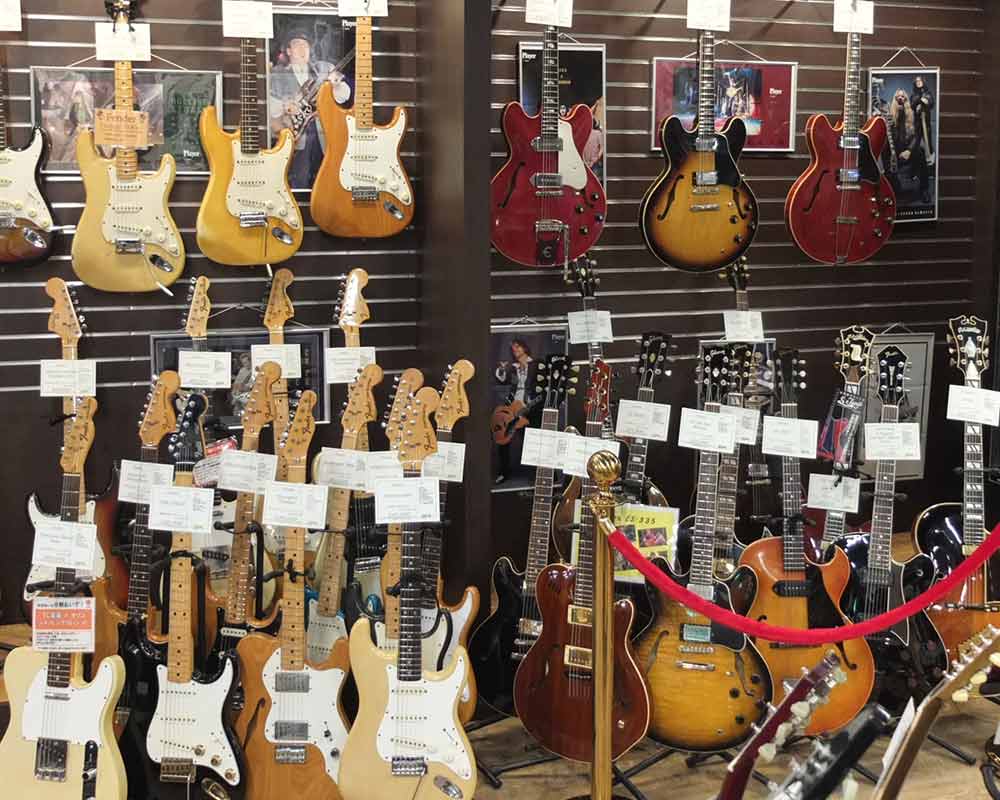
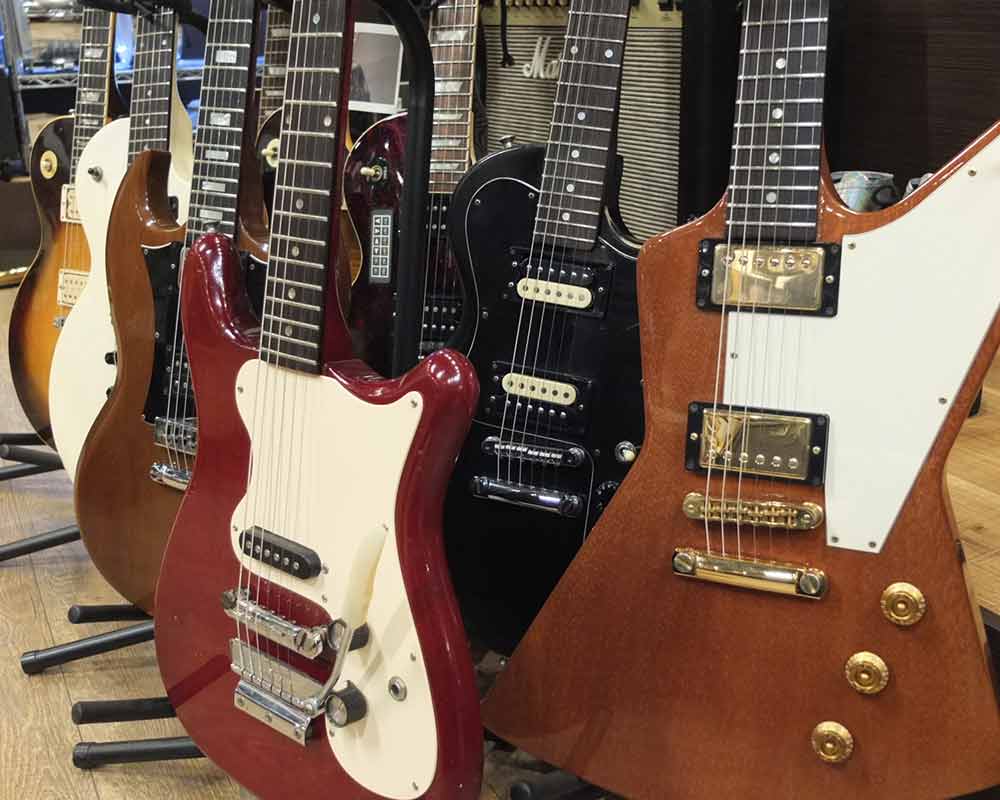
You're located in a popular spot in the center of Tokyo. Are there many foreign customers coming to the shop? Do you think there will be more with the Tokyo Olympics next year?
Shin-Okubo has become a quite famous sightseeing spot in Tokyo, and overseas customers are increasing every year. Recently they sometimes even outnumber the domestic customers. Surely for the Tokyo Olympics there will be even more visitors, so we're looking forward to it! We have an automatic translator installed in the stores so that even those who are worried about the language barrier can communicate with confidence.
All our staff love music and musical instruments, so we feel a kinship with anyone else who feels that way, and whether you are a foreigner or Japanese we treat you with the same courtesy and offer the same warranties and services. We encourage everyone to stop by when they visit Japan.

